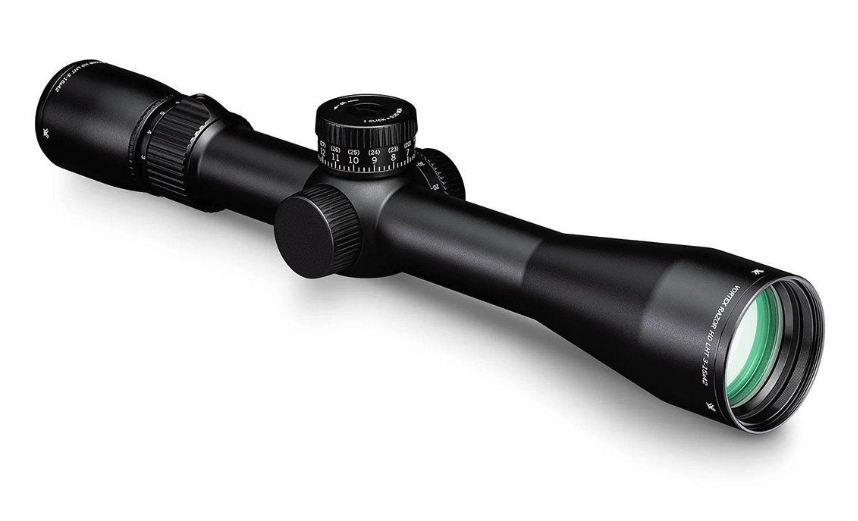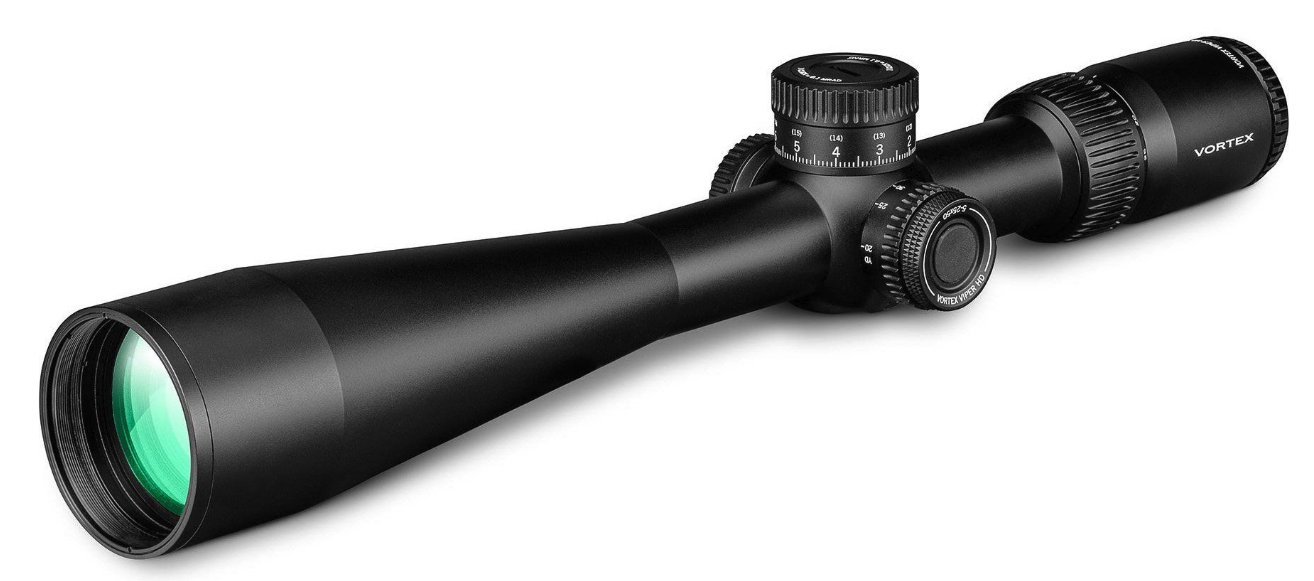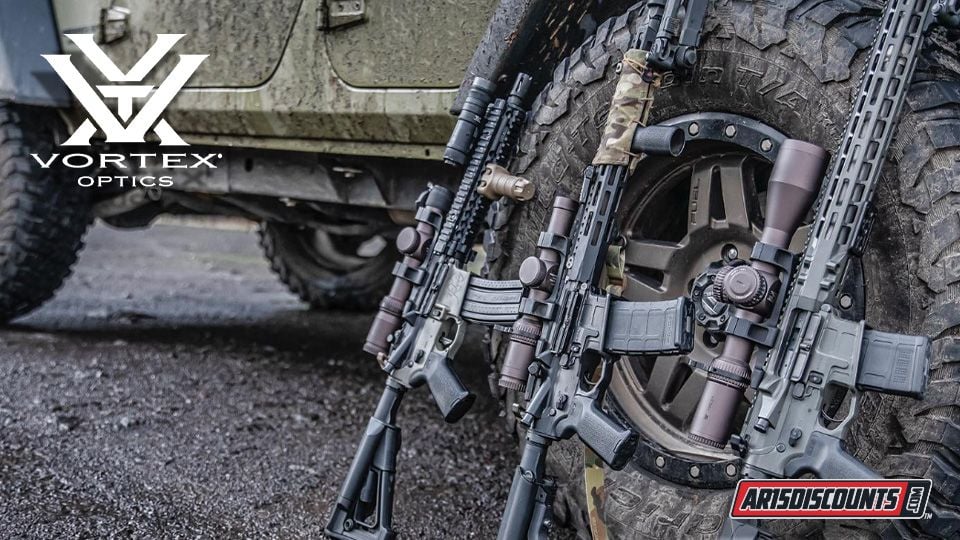Optics
How to Choose the Right Vortex Optic Based on Your Hunting Zone in the U.S.
Table of contents
Hunting across the varied landscapes of the United States requires gear tailored to the terrain, game, and shooting conditions you’ll encounter. From the thick forests of the East and Midwest to the expansive plains of the West, Vortex Optics offers riflescopes, red dots, prism scopes, binoculars, and spotting scopes designed to elevate your hunt. At AR15Discounts, we’ve seen how the right optic can transform your experience, and we’re here to help you pick the perfect Vortex optic for your specific hunting zone and style.
Mastering Close-Quarters in Eastern and Midwestern Timber
Hunting in the dense woods and rolling hills of the Eastern and Midwestern U.S. often involves quick shots at close range through heavy cover. Whitetails, turkeys, and other game move fast in these environments, where visibility is limited, and low-light performance is crucial during early mornings or late evenings. You need an optic that emphasizes speed, a wide field of view, and clarity in dim conditions.
For rifles, low-magnification optics or red dots excel in rapid target acquisition. The Vortex StrikeFire II Red Dot Sight is a top performer, with a crisp 4 MOA dot for fast aiming in brushy settings. Its durable construction and unlimited eye relief make it ideal for snap shots at deer darting through timber. The Vortex Spitfire 1x Prism Scope is another great option, combining the speed of a red dot with the ruggedness of a prism scope and an illuminated DRT reticle, perfect for reliable performance in tough conditions.
Shotgun hunters targeting turkeys or close-range game will appreciate the Vortex Viper SG Shotgun Enclosed Red Dot. Its 3 MOA dot offers precision for headshots on gobblers while maintaining quick target acquisition in tight cover. For a holographic option, the Vortex Razor AMG UH-1 Gen 2 Holographic Sight delivers a unique EBR-CQB reticle, excelling in fast-paced scenarios with exceptional clarity and a wide field of view.
In these regions, magnification ranges like 1-6x or 2-10x are ideal for shots from 20 to 200 yards. The Vortex Viper HD 2-10×42 SFP Riflescope, with its Dead-Hold BDC reticle, provides a wide field of view and excellent low-light performance for those critical dawn and dusk hunts. Its capped turrets protect adjustments from snagging on branches, making it a practical choice for navigating dense woods.
Excelling in Western Open Terrain for Long-Range Shots
Western hunting often means vast plains, mountain ridges, or high deserts where elk, mule deer, and pronghorn are spotted at long distances. Here, you need optics with higher magnification, precise reticles, and turrets that allow quick adjustments for shots stretching beyond 500 yards. Glassing for hours and making accurate shots in open country are key.
The Vortex Razor HD LHT 3-15×42 HSR-5i MOA offers a 3-15x magnification range and a 42mm objective lens. Its HSR-5i reticle, in the Second Focal Plane, is illuminated with 10 brightness settings, ideal for dawn or dusk shooting. The HD optical system delivers exceptional clarity and light transmission, while the lightweight design makes it easy to carry on long hunts. A locking elevation turret and capped windage turret ensure precision, making this scope perfect for medium to long-range shots in open country where light conditions shift quickly.

The Vortex Venom 3-15×44 FFP Riflescope is another strong contender, offering a 3-15x magnification range that balances a wide field of view for spotting game with enough zoom for precise long-range shots. Its EBR-7C reticle and exposed turrets cater to hunters needing quick adjustments for wind and elevation. For a more budget-friendly option, the Vortex Diamondback Tactical FFP 4-16×44 delivers first focal plane precision and clear glass, allowing you to extend your range without breaking the bank.

In open terrain, the choice between first and second focal plane scopes is significant. First focal plane scopes, maintain accurate reticle subtensions across all magnifications, which is critical for long-range holdovers. Second focal plane scopes, such as the Vortex Diamondback 3-9×40, are simpler and often more affordable, with reticles that stay consistent in size, ideal for hunters shooting at fixed distances or preferring a cleaner sight picture.
Versatile Optics for Mixed Terrains
Some hunters face varied terrain within a single hunt or move between regions—think Midwestern prairies blending into timber or Western foothills with patches of open country. A versatile optic that handles both close-quarters and mid-to-long-range shots is essential.
For near to mid-range precision, the Vortex Razor HD Gen III 1-10×24 is a versatile powerhouse. Its first focal plane EBR-9 reticle ensures accurate holdovers at any magnification.

The Vortex Viper PST Gen II 1-6×24 SFP is a low-power variable optic that shines here. Its 1-6x magnification range offers near-red-dot speed at 1x for close shots and enough zoom at 6x for precise shots out to 400 yards. The second focal plane BDC3 reticle keeps things straightforward for quick holdovers, and capped turrets ensure settings stay secure during rugged treks.

For those needing more reach, the Vortex Viper HD 5-25×50 SFP Riflescope offers a broad magnification range to tackle everything from timber to open plains. Its second focal plane design and Dead-Hold BDC reticle suit hunters wanting a single optic for diverse conditions, with capped turrets to protect adjustments in rough terrain.
When deciding between capped and exposed turrets, consider your hunting style. Capped turrets, found on the Viper HD 2-10×42 and Diamondback 3-9×40, are ideal for Eastern or Midwestern hunters who set their zero and rarely adjust, as they prevent accidental shifts in dense cover. Exposed turrets, like those on the Razor HD Gen III or Venom 3-15×44, are better for Western hunters who frequently dial for elevation due to varying distances and need fast, precise adjustments.
Spotting and Glassing: Binoculars and Spotting Scopes for Every Zone
Optics go beyond what’s mounted on your rifle. Binoculars and spotting scopes are vital for spotting and evaluating game, especially in Western terrain where animals may be miles away.
The Vortex Crossfire HD 10×42 Binoculars are a reliable, budget-friendly choice for all-around use. Their 10x magnification and 42mm objective lenses balance clarity and portability, making them ideal for Eastern or Midwestern hunters scanning through timber or across fields. For Western hunters needing more power, the Vortex Diamondback HD 12×50 Binoculars provide extra magnification and light-gathering capability, perfect for glassing distant ridges without a tripod.
The choice between angled and straight spotting scopes depends on your hunting style. The Vortex Crossfire HD 20-60×80 Angled Spotting Scope is excellent for long glassing sessions in the West, where you’re often seated or prone. The angled eyepiece allows comfortable viewing without constant tripod adjustments, reducing strain during extended use. The Vortex Crossfire HD 16-48×65 Straight Spotting Scope is better for quick setups or tracking moving game, as its straight design aligns intuitively with your line of sight. Straight scopes are also easier to use from a vehicle, which suits Eastern or Midwestern hunters scouting fields from a truck.
In Western hunts, where judging antler size or animal condition at long distances is critical, a spotting scope’s higher magnification (20-60x) and larger objective lens (65-80mm) provide essential detail. In denser Eastern or Midwestern environments, binoculars often suffice for shorter-range scouting, but a spotting scope can still help evaluate bucks from a distance without disturbing them.
Tailoring Your Optic to Your Hunt
Selecting the right Vortex optic hinges on understanding your hunting zone and style. In Eastern and Midwestern timber, prioritize low magnification (1-6x or 2-10x) and red dots like the StrikeFire II or Viper SG for speed and reliability in close quarters. For Western open terrain, choose higher magnification (3-15x or 4-16x) and first focal plane scopes like the Razor HD Gen III or Venom 3-15×44 for long-range precision. Versatile optics like the Viper PST Gen II 1-6×24 bridge both worlds, offering flexibility for mixed terrains.
Consider turret needs: capped for set-and-forget reliability in dense cover, or exposed for quick adjustments in open country. For glassing, 10×42 binoculars like the Crossfire HD work across most zones, while 12×50 Diamondback HD models excel in the West. Spotting scopes, whether angled for comfort or straight for speed, are crucial for long-range evaluation in open terrain but also aid scouting in denser regions.
With Vortex’s unbeatable VIP Warranty, you’re covered no matter where your hunt takes you. By matching your optic to the demands of your U.S. hunting zone—whether tight timber or vast plains—you’ll maximize your success in the field.
Low magnification, such as 1-6x or 2-10x, is ideal for dense timber in the East or Midwest, where shots typically range from 20 to 200 yards. Optics like the Vortex Viper HD 2-10×42 or Viper PST Gen II 1-6×24 offer wide fields of view and quick target acquisition for fast-moving game like whitetails in thick cover.
For Western open terrain, opt for higher magnification scopes. These provide precise reticles and exposed turrets for quick adjustments, perfect for long shots on elk or pronghorn across vast plains or ridges.
Capped turrets, found on scopes like the Vortex Viper HD 2-10×42, suit dense Eastern or Midwestern environments, preventing accidental adjustments in brush. Exposed turrets, like those on the Razor HD Gen III, are better for Western hunters needing rapid elevation and windage tweaks for long-range shots.
In Eastern or Midwestern timber, Vortex Crossfire HD 10×42 binoculars offer portability and clarity for short-range scouting. For Western long-distance glassing, Vortex Diamondback HD 12×50 binoculars or the Crossfire HD 20-60×80 angled spotting scope provide the power and detail needed to spot game across open terrain.
First focal plane scopes, like the Vortex Venom 3-15×44, are ideal for Western hunting, where accurate holdovers at varying magnifications are crucial for long-range shots. Second focal plane scopes, such as the Vortex Diamondback 3-9×40, are simpler and better for Eastern or Midwestern hunters shooting at consistent distances.
For close-quarters scenarios in dense cover, a 1-6x or 2-10x magnification range works best, as seen in the Vortex Viper PST Gen II 1-6×24 or Viper HD 2-10×42. Red dots like the Vortex StrikeFire II or Viper SG Shotgun Enclosed Red Dot are also excellent for rapid shots under 100 yards.
Match optics to terrain by choosing low-magnification red dots or scopes (1-6x, 2-10x) like the StrikeFire II or Viper HD 2-10×42 for Eastern/Midwestern timber, and higher-magnification FFP scopes (3-15x, 4-16x) like the Razor HD Gen III for Western open country. Binoculars and spotting scopes should align with scouting needs—10×42 for close ranges, 12×50 or 20-60×80 for long distances.
Angled spotting scopes, like the Vortex Crossfire HD 20-60×80, are best for prolonged glassing in Western terrain, offering comfort when seated or prone. Straight scopes, like the Vortex Crossfire HD 16-48×65, suit quick setups or vehicle-based scouting in Eastern/Midwestern fields, aligning easily with your line of sight.

